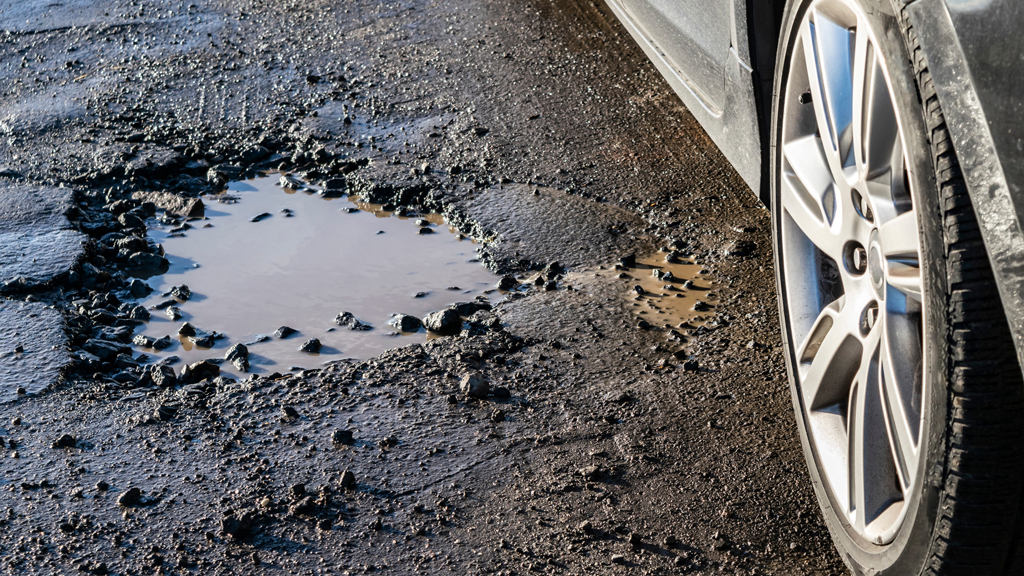To address Winnipeg’s pothole problem, the city should use the funding recently announced by the province and rollout a road repair program immediately.
So says Chris Lorenc, president of the Manitoba Heavy Construction Association (MHCA) and Western Canada Roadbuilders and Heavy Construction Association.
Winnipeg is set to receive approximately $9 million in one-time, emergency funding. That’s on top of the road funding and municipal transfer dollars in the 2022 provincial budget.
Lorenc says the money is urgently needed.
“In Britain they drive on the left side of the road. In Winnipeg we drive on what’s left of the road,” he said. “This has been an extremely painful spring for everyone travelling on our cratered streets. Motorists have blown tires and bent rims, and vehicles have been abandoned at the sides of our regional roads.”
Like dandelions, potholes are a hardy Winnipeg perennial.
“They’ve been made worse this year because of the long, cold winter and now the wet spring,” Lorenc said. “Drivers have had to slow down to near-stops to navigate the holes. At times they’ve had to find alternative routes in their daily commute.”
Lorenc says the pesky potholes are symptoms of a bigger problem – badly maintained municipal streets and provincial highways and roads.
“There needs to be more investment in our transportation infrastructure,” he said. “The funding strategy needs to recognize we’re working with years of neglect.”
The shortfall in infrastructure investment grows every year, says Lorenc.
“Many Winnipeg streets were built 40-plus years ago,” Lorenc said. “Without sufficient maintenance, today’s repairs simply pave over larger problems.”
The poor condition of Winnipeg’s roads is not unique to the city. Municipalities throughout the province, as well as highways and provincial roads, suffer from the same deterioration caused by prairie freeze-thaw cycles.
The MHCA has been a persistent advocate for a new fiscal deal for Manitoba municipalities, more money from the province to pay for such essentials as road repairs.
Lorenc says a fairer fiscal deal should share more equitably the total tax revenues that are collected and broaden the revenue sources municipalities can tap into.
At the moment, almost all municipal revenues come from property taxes on residences and businesses.
“Municipalities collect just 10 cents of every tax dollar, while they own more than one-half of public infrastructure,” said Lorenc. “So they have to finance construction, maintenance and rehabilitation without enough revenue.”
The cost-shared infrastructure funding agreements between the federal, provincial and municipal levels of government are usually split evenly – either half-and-half or one-third each way.
“They don’t recognize that new construction needs to be maintained,” said Lorenc.
Every car-driving Manitoban notices how much smoother the ride is once they cross the U.S. border.
“The State of North Dakota is no richer than Manitoba,” said Lorenc. “But it is the beneficiary of a national infrastructure fund and state and local taxes that are dedicated to roads and highways. It certainly makes a difference.”
Lorenc says Winnipeg and the rest of Manitoba need to get a handle on their street and road maintenance situation, and soon.
“Government has to look at properly maintaining the current assets – roads, highways and bridges – and it must also address the new infrastructure that will be needed in the future to ensure continued economic growth,” he said. “To boost Manitoba’s trade productivity, we need a strategy that builds and maintains our key trade corridors and gateways. This is why a long-term, strategic investment plan is sorely needed.”
Lorenc’s words of warning are echoed by Ahmed Shalaby, professor of civil engineering at the University of Manitoba, and a specialist in pavement design and highway materials.
“We’ve been getting one punch of bad weather after another this year,” said Shalaby. “The freeze-thaw cycle and the recent bouts of heavy rain in southern Manitoba have really pounded the city’s and province’s aging infrastructure.”
In rural Manitoba the heavy rains have washed out many culverts.
“When the culverts were originally put in place, there were different expectations about the weather,” he said. “But now we need more culverts, and larger ones of bigger diameter. Our understanding of climate has gradually changed and now our infrastructure needs to change with it.”
In addition to more resilient infrastructure, Manitoba needs more trained people to design and install it.
“Government needs to support research and development and the training of engineers and technologists,” he said. “We need more practitioners with the right skills, including the people to take research from the lab and apply it in the field.”











Recent Comments
comments for this post are closed